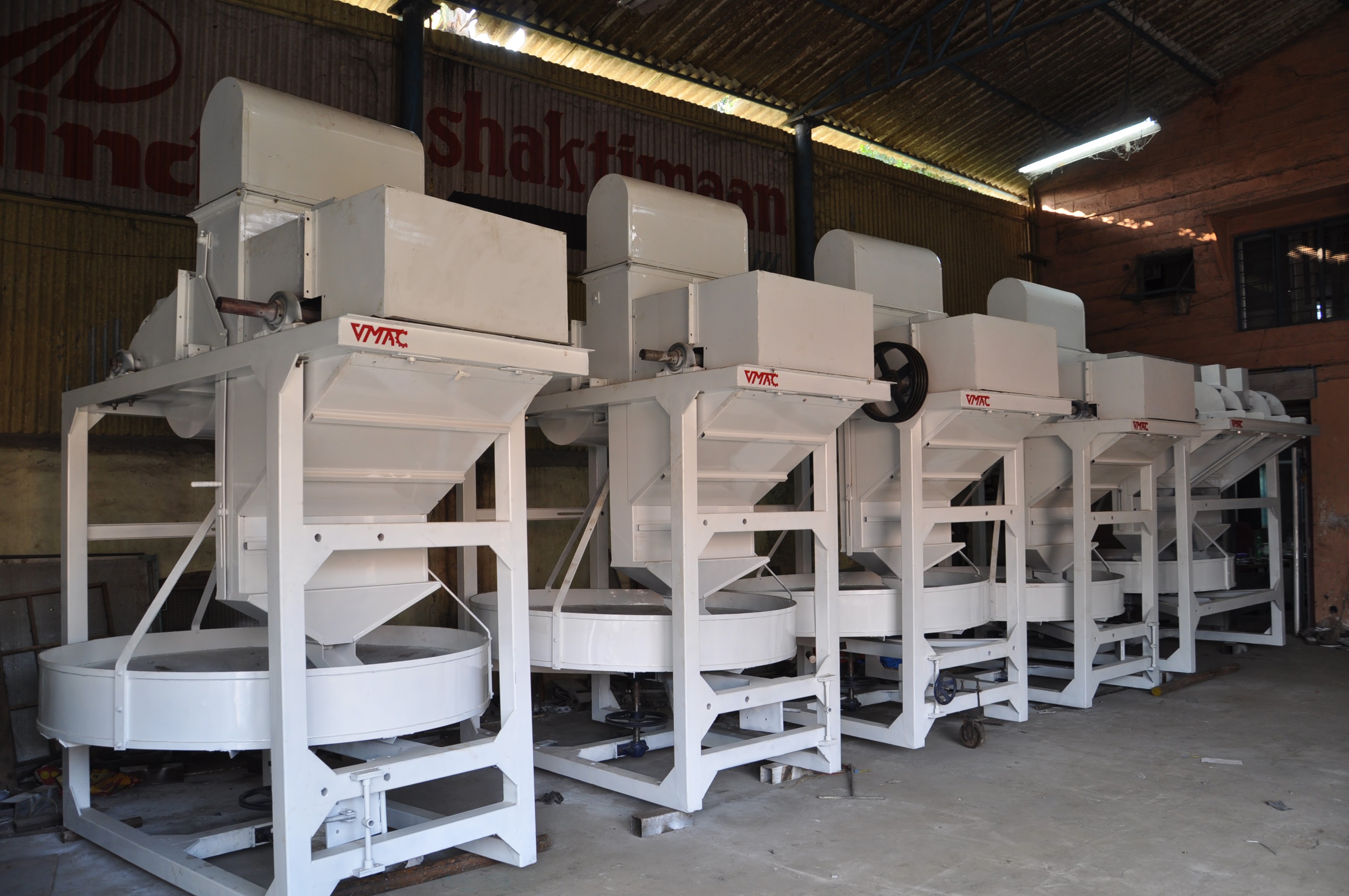
Production
Mastering Coffee Production
At Vmac Industries, we've mastered the balance between traditional craftsmanship and modern technology.
Discover best practices for maintaining bean freshness, preventing spoilage, and managing inventory with advanced coffee silo systems.
Efficient storage is a cornerstone of the coffee production process, ensuring that green beans retain their quality and flavor potential before roasting. Silos provide an ideal solution for handling larger volumes of beans, offering both space optimization and controlled environments. This guide delves into how coffee silo systems work, their benefits, and the steps you can take to make the most of them—protecting your beans from spoilage, contamination, and fluctuating conditions that can degrade cup quality.
Green coffee beans are hygroscopic, which means they readily absorb moisture and odors from their surroundings. When stored improperly, beans can develop mold, off-flavors, or lose the nuanced characteristics that command premium prices. Silo systems tackle these issues by:
Minimizing Exposure to Air: Airtight or semi-sealed designs reduce oxidation.
Controlling Temperature and Humidity: Regulated environments keep beans in ideal conditions.
Streamlining Inventory Management: Silos offer easy loading, unloading, and tracking of bean volumes.
Properly maintained silos not only preserve bean freshness but also boost operational efficiency, making them an essential part of many coffee processing lines.
Stainless Steel: Offers excellent durability and resistance to corrosion, vital in humid or coastal areas.
Galvanized Steel: A budget-friendly alternative, though with slightly lower corrosion resistance.
Food-Grade Coatings: Protect against metal leaching and ensure beans remain free of contamination.
Sealed Silos: Ideal for consistent temperature and moisture control, often featuring aeration systems.
Semi-Sealed Silos: Allow some airflow for beans that require breathing, but still maintain a controlled environment.
Forced-Air Ventilation: Circulates air uniformly, preventing hot spots.
Cooling Units: In warmer climates, mechanical cooling keeps beans from overheating.
Screw Conveyors or Vibrating Floors: Streamline bean outflow without manual labor.
Gravity-Fed Systems: Simpler approach for smaller-scale operations, relying on natural bean flow from top to bottom.
Always process your beans through pre-cleaners or destoners before silo storage. This eliminates foreign objects (stones, sticks, husks) that could introduce mold or damage silo surfaces.
Target Moisture: Aim for around 10-12% moisture in green beans.
Routine Checks: Use moisture meters or sensors within the silo to ensure beans remain within the safe range.
High temperatures accelerate oxidation and degrade flavor compounds. Whether using natural airflow or mechanical cooling, keep the silo environment within 60°F to 75°F (15°C to 24°C) whenever possible.
Short Aeration Cycles: Brief, periodic airflow is often more effective than continuous blowing, which can overdry beans.
Prevent Condensation: In climates where day-night temperatures vary significantly, condensation can form on silo walls, leading to mold. Proper ventilation avoids moisture buildup.
Use a First In, First Out system to avoid beans sitting too long, losing their prime flavor potential. Automated discharge features or well-planned manual retrieval methods help rotate inventory effectively.
Silo Interior: Schedule thorough cleanings after each batch or at least seasonally to clear residual coffee dust or debris.
Seal Integrity: Check doors, vents, and seams for cracks or gaps that may allow moisture or pests inside.
Many modern silo setups offer digital sensors and software integrations that track bean volume, moisture, and temperature in real time. This data helps:
Prevent Stockouts: Alerts you when levels are getting low.
Forecast Supply Needs: Aligns your purchasing or roasting schedules with actual inventory.
Maintain Quality Consistency: Identifies any sudden environmental shifts that could affect bean flavor.
By eliminating time-consuming manual measurement and guesswork, silo management software streamlines:
Production Planning: Precisely schedule roasting or shipping tasks.
Quality Control: Match specific silo lots to roast profiles or customer needs.
Cost Optimization: Reduce labor hours and potential waste from underutilized or overstocked beans.
Mold or Mildew
Cause: Excess moisture or poor ventilation.
Solution: Improve aeration cycles, lower ambient humidity, or fix silo leaks.
Hot Spots
Cause: Uneven airflow or temperature differentials.
Solution: Redistribute beans, enhance aeration technology, or reduce batch size for more uniform airflow.
Bean Compaction
Cause: Excessive stacking, poor bean rotation.
Solution: Implement FIFO retrieval and consider automated discharge systems to maintain flow.
Pest Infestations
Cause: Unsealed entry points, leftover bean residue.
Solution: Repair cracks, improve cleaning schedules, or incorporate pest control measures.
While the upfront cost of a high-quality silo system may seem steep, the return on investment (ROI) quickly becomes apparent:
Reduced Spoilage: Fewer beans lost to mold or oxidation.
Improved Quality: Beans maintain their flavor characteristics, fetching higher market prices.
Labor Savings: Automated discharge and real-time tracking cut down on manual tasks.
Peace of Mind: Consistently high-quality beans strengthen brand reputation and customer loyalty.
Combine these benefits with strategic marketing—highlighting your robust storage practices—and you can command a premium in the ever-competitive coffee sector.
Green bean storage in silos is a powerful method for preserving the intrinsic qualities of coffee, ensuring that each batch you roast lives up to its full potential. By selecting the right silo design, implementing proper climate controls, and following best practices for maintenance and rotation, you can significantly extend bean shelf life and maintain consistent cup excellence. In a market that prizes quality, these improvements aren’t just operational perks—they’re strategic advantages that drive higher margins and brand loyalty.
Lastest blog posts